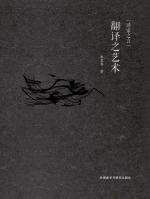Review of The Art of Translation
用户823537
The Art of Translation is a captivating exploration that delves deep
into the nuanced world where languages converge, cultures intertwine,
and words are transformed into new forms of expression. This book goes
beyond the surface - level mechanics of translation, presenting a rich
tapestry of insights that elevate the craft to a true art form. At its
core, the book masterfully argues that translation is not merely a
matter of substituting words from one language to another. Instead, it
emphasizes that translation demands a profound understanding of both the
source and target languages, as well as the cultural contexts that
underpin them. The author skillfully demonstrates how translators must
be linguists, cultural anthropologists, and literary artists all at
once. For instance, when translating a classic piece of literature, a
translator must not only convey the literal meaning of the text but also
capture its style, tone, and the emotional resonance it holds for its
original audience. This requires a delicate balance of precision and
creativity, a balance that the book deftly analyzes through numerous
well - chosen examples. One of the book’s greatest strengths lies in
its in - depth exploration of the different translation strategies and
techniques. It meticulously dissects approaches such as literal
translation, free translation, and transcreation, weighing the
advantages and disadvantages of each. By presenting real - world case
studies, the author illustrates how the choice of strategy can
significantly impact the final translation. For example, in translating
advertising copy, transcreation might be preferred to ensure that the
message resonates with the target audience, taking into account cultural
sensitivities and marketing goals. This practical approach makes the
book an invaluable resource for both aspiring and experienced
translators, offering them a toolkit of methods to apply in their work.
Moreover, The Art of Translation delves into the ethical considerations
that accompany the translator’s role. It raises thought - provoking
questions about the translator’s responsibility towards the author, the
text, and the audience. Should a translator prioritize faithfulness to
the original author, even if it means sacrificing readability? Or should
they focus on making the text accessible to the target audience,
potentially altering some elements? These ethical dilemmas are presented
in a nuanced manner, encouraging readers to engage in critical thinking
about the translator’s complex position. The book also shines a light
on the historical and cultural significance of translation. It traces
the evolution of translation over time, highlighting how it has served
as a vehicle for the spread of ideas, the preservation of cultural
heritage, and the fostering of cross - cultural understanding. From the
translation of ancient religious texts that shaped civilizations to the
modern - day translation of contemporary literature that enriches our
global cultural landscape, the book underscores the transformative power
of translation. However, the book could benefit from a more diverse
range of examples. While it draws on many well - known Western literary
works, it could expand its scope to include more translations from non -
Western cultures. This would provide a more comprehensive view of the
translation art, reflecting the global nature of language and
literature. Additionally, a deeper exploration of the impact of
technological advancements on translation, such as machine translation
and translation software, could have added a contemporary edge to the
discussion. Overall, The Art of Translation is a compelling and
insightful read. It offers a comprehensive and nuanced understanding of
the complex and fascinating world of translation. Whether you are a
student of linguistics, a professional translator, or simply someone
with an interest in language and culture, this book is sure to deepen
your appreciation for the artistry involved in bridging linguistic and
cultural divides. It serves as a testament to the beauty and complexity
of translation, reminding us that it is indeed a true art form worthy of
our admiration and study.



 京公网安备 11010802032529号
京公网安备 11010802032529号